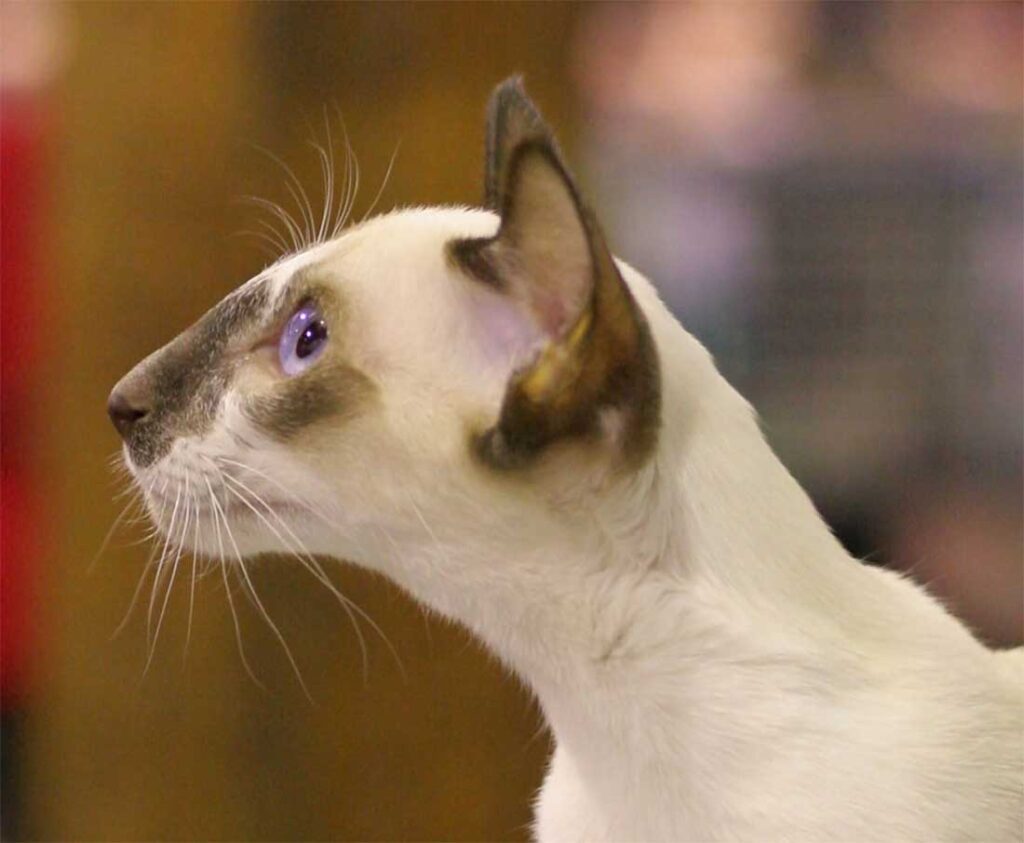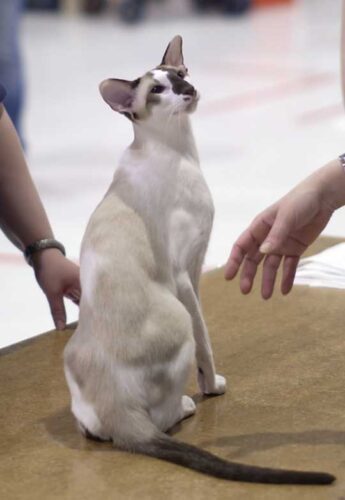
Content |
|---|
Characteristics "Seychellois cat"
Coexistence is important that you have with your new friend. Before considering the acquisition of a cat of the breed "Seychellois cat" you know certain factors. You must take into account their character, their need for exercise, their interaction with other pets, their care and if you have small children, their level of tolerance towards them.
Joy5.0 out of 5 stars (based on 1 review)
|
Activity level5.0 out of 5 stars (based on 1 review)
|
Friendliness to other pets3.0 out of 5 stars (based on 1 review)
|
|---|---|---|
Friendliness to children5.0 out of 5 stars (based on 1 review)
|
Grooming requirements3.0 out of 5 stars (based on 1 review)
|
Vocality4.0 out of 5 stars (based on 1 review)
|
Need for attention4.0 out of 5 stars (based on 1 review)
|
Affection towards its owners5.0 out of 5 stars (based on 1 review)
|
Docility2.0 out of 5 stars (based on 1 review)
|
Intelligence5.0 out of 5 stars (based on 1 review)
|
Independence2.0 out of 5 stars (based on 1 review)
|
Hardiness4.0 out of 5 stars (based on 1 review)
|
History
The Seychellois it is a rather rare domestic cat of very recent origin. In the Decade of 1980, a London-based geneticist and breeder named Patricia Turner wanted to start a cat breeding project based on the characteristics of a cat that was once endemic to the Seychelles. He had learned about this animal through reading the travelogues written by explorers who had visited the Indian Ocean archipelago.. Passionate about breeding purebred cats, the Mrs. Turner had already participated in the sixties in the registry of the Scottish Fold -and, Therefore, of the Scottish Straight– in the Governing Council of the Cat Fancy (GCCF), the leading British feline association.
To create the Seychellois cat, the breeder began to cross Siamese with Persians bicolor and the Oriental shorthair cat. Later, breeders began to cross Siamese and longhair balinese within the new breed, which resulted in a variety of Seychellois cat long and semi-long hair.
The race Seychellois is recognized by the Fédération Internationale Féline (FIFé), Europe's leading feline association, that in 2005 allowed him to participate in the championships organized under his auspices. But, being quite rare, only seen quite occasionally at cat shows.
In 2011, the FIFé decided to combine the Breed Councils and the Siamese Cat standards, the balinese cat, the Oriental shorthair cat and the Oriental Longhair cat. at the end of 2013, Seychellois Shorthair and Seychellois Longhair were integrated into this group. Later, the organization announced that, starting at the 1 in January of 2016, the Short-haired Seychellois would be called Siamese (with white) and the Longhair Seychellois would be called balinese (with white).
At the end, the Seychellois cat still a very confidential breed around the world, and is mainly found in the UK and continental Europe, including France.
Physical characteristics

The Seychellois cat share the same breed standard FIFé (Fédération Internationale Féline) with the Siamese, the Balinese cat, the Oriental shorthair cat and the Oriental Longhair cat. Similar to the Siamese, it is a medium size cat, which measures approximately 30 cm to the cross. Weighs 4 to 6,5 kilos in adulthood. His body is muscular, graceful and slim, and its legs are long and thin.
The eyes are almond-shaped and a remarkable azure blue, located in a head elongated, triangular in shape and attached to the trunk by a neck Strait. The cat has a ears quite large and a tail long, thin and pointed.
The fur is short, except in the varieties balinese and Oriental Longhair cat. The coat is silky and smooth and the extremities -face, ears, legs and tail- are at least partially colored. The kitties, like their cousins Siamese, they are white at birth. Only in the following days and weeks do their colors appear.
Color variations
The Seychellois comes in three color variants, according to the area occupied by the white spots on its fur. They are due to the gene piebald, responsible for the presence of random white spots in the animal kingdom. It is not only present in domestic cats -including the Seychellois– but also, for example, in dogs and snakes.
There is a classification system -del 1 to the 10- according to the surface of the animal's body covered by white spots. Individuals classified as “1” they are almost all black, while those classified as “10” they are almost all white. The high degree of whiteness present in Seychellois place them in categories 7 to 9.
More concretely, the three variants of piebald present in the Seychellois are:
- Seychellois 7: the body is white, while the tail is colored, as well as parts of the head, body and legs;
- Seychelles 8: the body is white, but small areas of the head and legs are colored;
- Seychelles 9: the body is white, the tail is colored and there are small areas of color on the head.
Size and weight
- Size: Of 30 to 35 cm.
- Weight: Of 3 to 5 kg
Varieties of "Seychellois cat"
Originally, cats Seychellois from the breeding project of the British breeder and geneticist Patricia Turner they were shorthair cats. The cats that were then used for crossing were the Siamese, the bicolor Persian and Oriental shorthair cats.
A new variety of cat Longhair or semilargo appeared most recently, When the Balinese cat were incorporated into the development of this breed.
Character and skills
"Seychellois cat" |
||
|---|---|---|
 | ||
Like his close cousin, the Siamese, the Seychellois cat he is a lively cat, energetic and very active. They love to play, jump and climb, and they really appreciate having cat toys and a cat tree. As they are intelligent and curious, it is advisable to keep valuables out of reach, fragile or potentially harmful.
The Seychellois He is also affectionate and very attached to his owner. They need their owner to return affection and give them enough time and attention; they should not be left alone too often or for too long. This makes it an ideal companion for people who live alone., as long as, of course, be able to take care of it.
His love of play also makes him a cat who appreciates the presence of children.. But, you have to teach them not to rush with their little friend, since this one does not take it well. On the other hand, the Seychellois cat tends to adapt well to the presence of other domestic animals.
Last, the Seychellois is known to be very vocal, although a little less than his cousin the Siamese, which also has a slightly more powerful voice.
Health
The Seychellois has a half-life of about 12 years.
Being a very new breed, there is still little evidence of predisposition to certain diseases, but is currently considered to be in good health and does not appear to be affected by hereditary or congenital diseases, unlike other domestic cats.
Life expectancy
- 12 years
Grooming
The short and dense coat of the Seychellois does not require particularly careful maintenance.
A weekly brushing of the cat's coat is sufficient. The new variety of longhair cat requires more care: you have to brush it about three times a week.
Videos "Seychellois cat"
|
|
|
|---|
